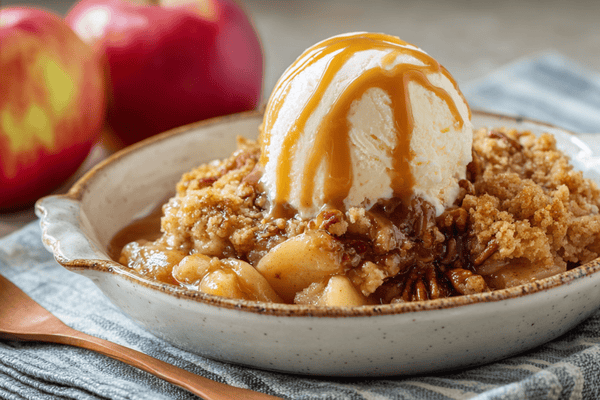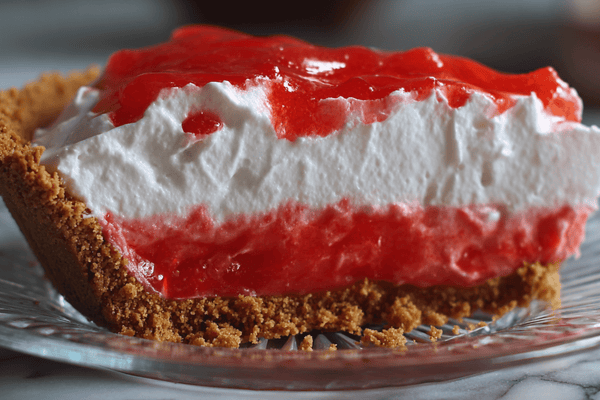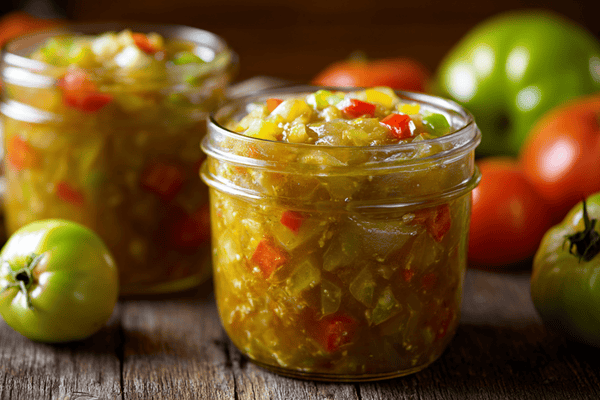 We recently wrote a guide on some of the most famous things to have ever come out of Japan. One thing that appeared on our list was Japanese knives and these are kitchen tools that really pack a punch in terms of quality and performance.
We recently wrote a guide on some of the most famous things to have ever come out of Japan. One thing that appeared on our list was Japanese knives and these are kitchen tools that really pack a punch in terms of quality and performance.But come on; surely Japanese knives aren’t that good…are they? What’s so special about them and what makes a Japanese knife different from western blades?
There are a lot of features that set Japanese knives apart such as the hardness of the steel, how sharp the blade is, and the various types of knives available. However, one thing that you have to keep in mind is that a Japanese knife doesn’t necessarily have to have been made in Japan, although that’s where the concept began and of course, how they got their name.
Don’t be fooled into thinking that a set of Japanese kitchen knives is going to be anything like your regular European or Western-style knives. Once you start using these blades, you’ll notice that it’s like a whole new experience. In this guide, we’ll talk more about what sets Japanese knives apart and the qualities that a knife must have in order to be called Japanese.
Table of contents
- The Making of Japanese Knives
- The Difference Between a Japanese Knife and Other Knives - What Sets Them Apart?
- Hardness
- Steel Types
- Weight and Thickness
- Blade Angle
- Bolster
- Why Is Japanese Associated With Knives? A History
- Types of Japanese Knives
- Are All Japanese Knives Made In Japan?
- Final Thoughts
The Making of Japanese Knives
Anyone with a passion for cooking will at least recognise that Japanese knives are among some of the best kitchen tools out there. This is a country that is renowned for its ability to produce exceptional blades and there is a rich history of at least 600 years of knife making as well as sword making. During this time, Japanese knife makers have really had time to develop their craft and a method for knife production that is second to none.We will go into the main differences between Japanese and German knives in more detail later on. But for now, understand that Japanese knives are usually much more balanced and lightweight. Another key thing that makes Japanese knives what they are is the type of steel that is used to craft them. They’re made from much thinner, harder steel which is far more easily able to hold a sharp cutting edge.

In terms of precision, these features mean that Japanese knives truly are a cut above the rest. This is one of the main reasons that so many professionals opt for them as well as people making everyday meals in their kitchens.
On top of this, Japanese knives come in many shapes and forms; each one designed to do a specific task. Later on, we’ll give you a brief rundown of some of the most common types of Japanese knives and you’ll easily see the diversity compared to the blades we have in the western world.
So, how are Japanese knives made? Well, the main point is that these knives are made from a single piece of metal - typically some sort of steel. This uses an advanced forging method that tempers and hammers the metal in order to lovingly create each blade. However, there are two methods commonly used in the production of a Japanese knife and each one results in slightly different characteristics of the final product.
● Kasumi or mist knives use a combination of flexible and hard steel along with soft iron which ensures a very sharp blade with an excellent degree of sturdiness.
● Honyaki which is often referred to as the true forging method makes use of just steel. The main benefit of this is that the knife is able to retain its edge for much longer.
The Difference Between a Japanese Knife and Other Knives - What Sets Them Apart?
Simply holding a Japanese knife will make you feel the difference from a western knife because of the weight and balance. But with that in mind, let’s take a look at the key differences that truly set Japanese knives apart from the rest.
Hardness
Japanese knives are much harder than their German counterparts. The western knives that many of us are used to using have a hardness rating that’s anywhere between 52 and 56. However, Japanese knives have hardness ratings that are much higher and could be between 58 and 65.Why does hardness matter, I hear you ask? Well, it’s because the harder a knife is, the longer it will retain its edge. If you want to avoid sharpening all the time then this is crucial.
Of course, regularly honing your Japanese knives is also a great way to keep them sharp and ready to use. But when using a Japanese knife, you won’t even need to hone as often.
Steel Types
 The types of steel used in the manufacture of German steel knives is largely the same across the board. But with Japanese knives, there is much more variety in terms of what is used. The knifemaker may opt for different types of steel according to how they want the knife to be finished and how it’ll be used.
The types of steel used in the manufacture of German steel knives is largely the same across the board. But with Japanese knives, there is much more variety in terms of what is used. The knifemaker may opt for different types of steel according to how they want the knife to be finished and how it’ll be used.Traditionally, Japanese knives were made from harder types of steel and a soft iron spine. However, in modern manufacture, there are typically three layers of steel that make up the blade.
Some Japanese knives also benefit from Damascus steel which is layered multiple times.
Weight and Thickness
Western knives are pretty heavy and bulky with a larger cutting angle along the edge. Moreover, these blades are quite a bit more robust which is why a lot of people choose a German chef’s knife for tough tasks like cutting through poultry bones or solid veggies like squash and pumpkin.But the downside of this weight and thickness is that the knives are nowhere near as sharp. Japanese blades are so much sharper and they’re significantly more lightweight. That means that these blades are not designed for more heavy-duty kitchen tasks and the majority of Japanese knives are used for slicing.
Blade Angle
One distinguishing feature of a Japanese knife is the finer cutting angle. The reason that it’s a lot easier to obtain this angle is thanks to the hard steel. The benefit is that you end up with a much sharper knife that’s perfect for slicing, chopping, dicing and mincing with great precision.If you have never used a Japanese knife before, one of the first things you’ll notice upon doing so is how much easier the blade moves through your food.
Bolster
When you have a western knife, it’s often a lot more difficult to sharpen because of the thick extending bolster that runs from the heel to the top of the handle. In order to effectively sharpen the knife, one has to grind down the bolster which makes the process more trying. However, this is not a feature of a Japanese knife and one of the reasons they tend to be easier to sharpen.
Why Is Japan Associated With Knives? A History
There is evidence of knife use in Japan as far back as the year 710 in the Nara Era. There are even museums and Treasure Houses in Japan showcasing these stunning knives that have narrow, long and curved blades.Back then, it was demonstrated that the blades were mainly used in religious ceremonies, particularly by aristocracy and royalty. In addition to the knives, the ceremonies would include animals like the crane and the carp as well as traditional Japanese music.
Moving forward through time, it appears that the Japanese developed an understanding for how effective their knife design would be in food preparation. During the Edo period, we see the development of the yanagiba, deba and nakiri knives. Shortly after this, the gyuto knife was invented and today, this is one of the most commonly used Japanese knives.
As knifemakers have created new approaches to their methods, the quality of Japanese knives has grown and grown. But one thing that has remained consistent is that each type of Japanese knife is designed with a specific purpose in mind.
In Japan, using a traditional knife is no laughing matter. It can take chefs years to complete their intense training until they are ready to create delicious dishes. Working in the kitchen in Japan is much more than just knowing how to throw together a good meal; being able to handle your knives and care for them is just as important.
What’s more, professional chefs in Japan see their knives as an extension of themselves; a personal item that should be cherished. They take incredibly good care of their knives so that they get many years of use out of it.
There is a Japanese belief that, after a knife has been used for several years, a spirit will inhabit it. When this happens, the connection between chef and knife becomes even more intense.
Of course, there will come a point when the knife is no longer useful as it becomes worn and cannot be sharpened any more. But unlike here in the western world, Japanese chefs don’t just throw their knives out and buy a new one. There’s a whole ceremonial approach to the death of a knife and it’s treated with as much respect as a human being.
The knife is placed within a hocho-zuka which is specifically designed for the burial of knives. These mounds allow us to appreciate the life of the knife but also play a beneficial role to the spirit that once inhabited it. Here, they can find rest.
Some people even use the hocho-zuka as a place to come and pray particularly if they are looking to improve their skills in the kitchen.
It may all seem a little far fetched to us here in the west but when you think about it, it’s pretty admirable. These chefs are so appreciative of their amazing tools that they’re driven to take immaculate care of them and show them the utmost respect, even after they’re rendered useless.
Types of Japanese Knives
 I have mentioned a couple of times up until this point that each Japanese knife is designed with a specific purpose in mind. As such, these knives can often be purchased in sets that consist of some of the most useful Japanese knives in the kitchen. You can also buy them individually and create your own kitchen arsenal. Here are some of the most well-loved types of traditional Japanese knife.
I have mentioned a couple of times up until this point that each Japanese knife is designed with a specific purpose in mind. As such, these knives can often be purchased in sets that consist of some of the most useful Japanese knives in the kitchen. You can also buy them individually and create your own kitchen arsenal. Here are some of the most well-loved types of traditional Japanese knife.
● Gyuto; this is a medium to large knife that can measure anywhere between seven and ten inches. The term gyuto actually translates to cow sword but its closest western knife would be the chef’s knife. The great thing about these blades is that they’re multipurpose and can be used for so many different meats and veggies. It’s a great starting point when you’re just getting into Japanese knives.
● Petty; the petty knife is not all that dissimilar to the western utility knife and usually measures between four and six inches in length. They’re just as versatile as the gyuto but are better for smaller, more detailed tasks as well as for cutting herbs.
● Santoku; the santoku knife is another multipurpose blade and translates to three virtues which is very fitting considering its many uses. These blades are a little smaller than the gyuto at around six to seven inches and have a flat or rounded tip instead of a pointed one.
● Yanagi; these are fillet knives that are most commonly used by sushi chefs. The yanagi knife is extremely precise and is ideal when working with the delicate flesh and skin of fish.
● Usuba; the usuba is another type of vegetable knife but it’s much bigger and bulkier than the nakiri knife, which we’ll look at shortly. These knives are designed to make perfect wafer-thin slices of foods that are very common in Japanese dishes.
● Deba; the deba is used for butchering fish and has an incredibly sharp edge with a slightly wider spine which is sturdy enough to cut through bones and break up larger fish.
● Sujihiki; if you need a knife to cut up roast meat or for making thinner slices of things like fish and cheese then the sujihiki is a perfect choice. It’s often used when preparing sushi thanks to its ability to be delicate with its long thin blade.
● Nakiri; this is a common Japanese vegetable knife that has a square blade which isn’t all that dissimilar to a butcher’s knife. The nakiri is favoured for things like making uniform chunks of veggies and is ideal for more solid things like potato, melon and butternut squash.
● Honesuki; the honesuki knife is used for boning poultry and has a thick spine with a pointy tip. It’s great for cutting up whole birds and getting through their soft tendons.
Are All Japanese Knives Made In Japan?
Back in the day, any knife that was considered to be Japanese would have been crafted in Japan. Even today, it’s possible to purchase some of the best knives in the world from this country, made by artisans using traditional methods. Of course, for this, you’ll be expected to pay much more for the privilege.However, in the modern kitchen, not all Japanese knives have been made in Japan. The term Japanese knife now largely refers to the style of knife and the way that it was made. Anyone around the world could craft one of these knives and call it Japanese. And for all intents and purposes, it would be.
Final Thoughts
Japan is famous for a lot of things and one of the most well-known products to come out of this East Asian nation is the knife. But aren’t all knives the same and what really makes a Japanese knife different from any other type?Well, if you’ve ever used a Japanese knife, you’ll know how effective they are and that they perform far more superbly than other types of knives. They’re lighter, sharper and a lot more precise. What’s more, there are so many different kinds of Japanese knives; each one is designed with a specific purpose in mind.
Once you get your hands on a Japanese kitchen knife, we’re under no doubt that you’ll ever go back to using anything else again. With a rich history in knife making, it’s no wonder that Japan is one of the biggest producers of blades in the world. Even other countries have taken on their traditional methods so you can now buy Japanese knives that have been forged around the globe!


